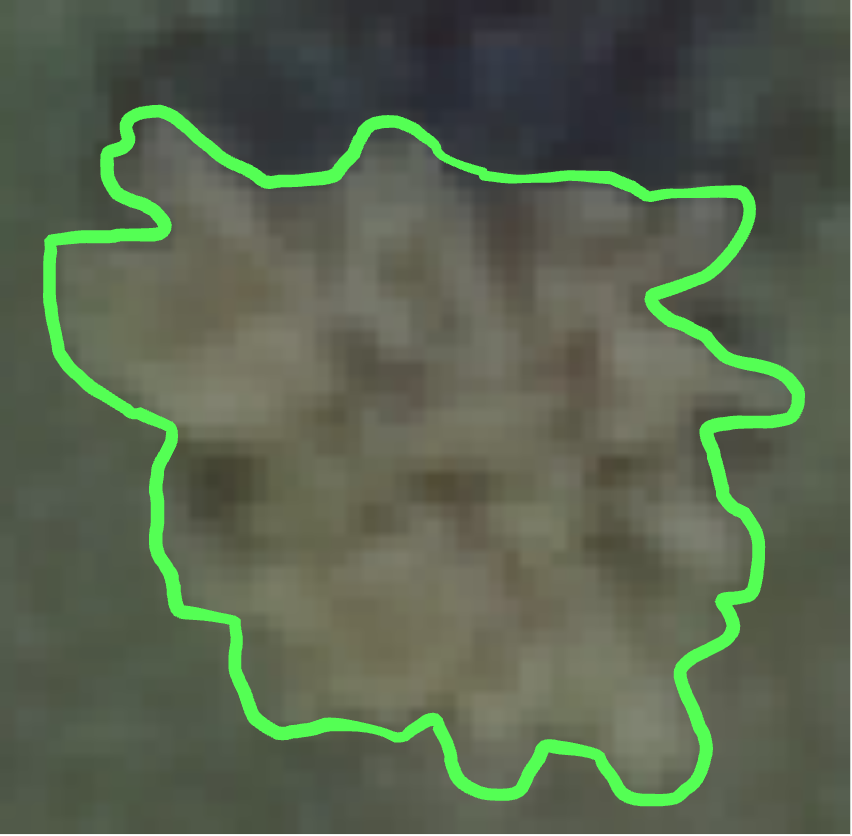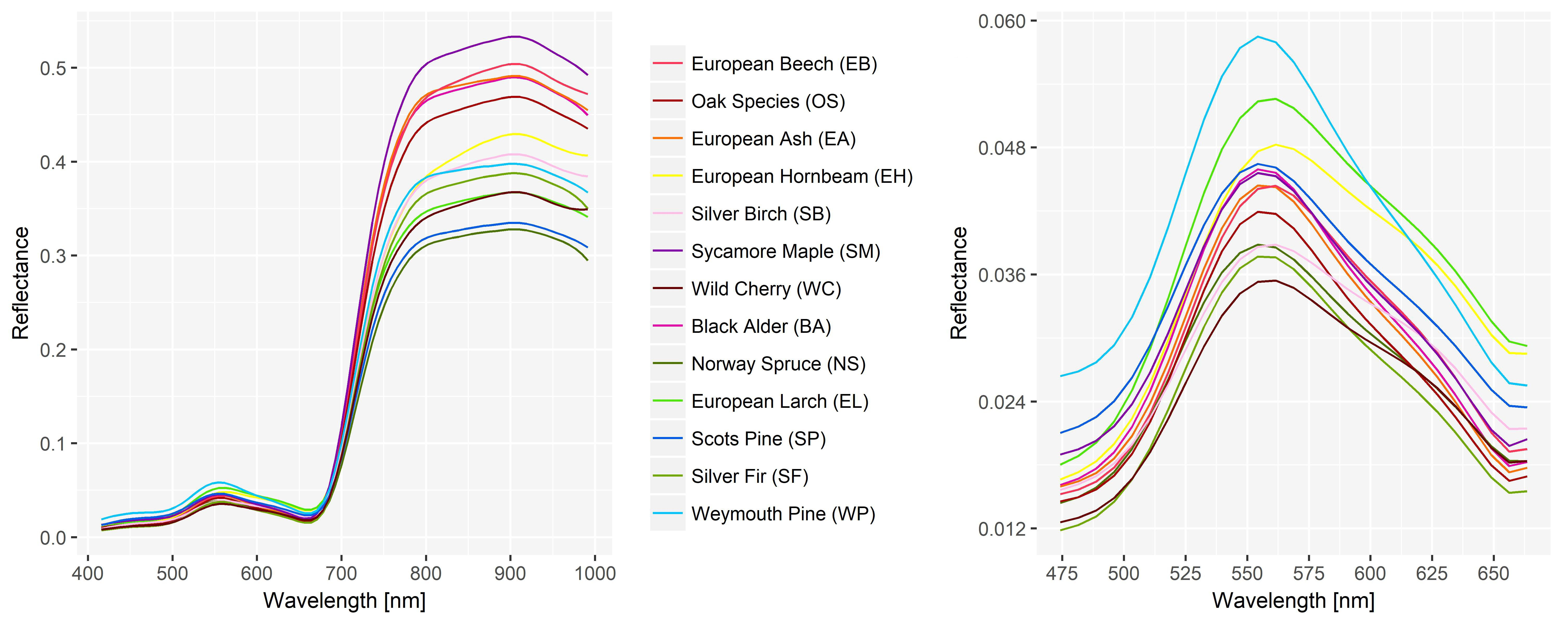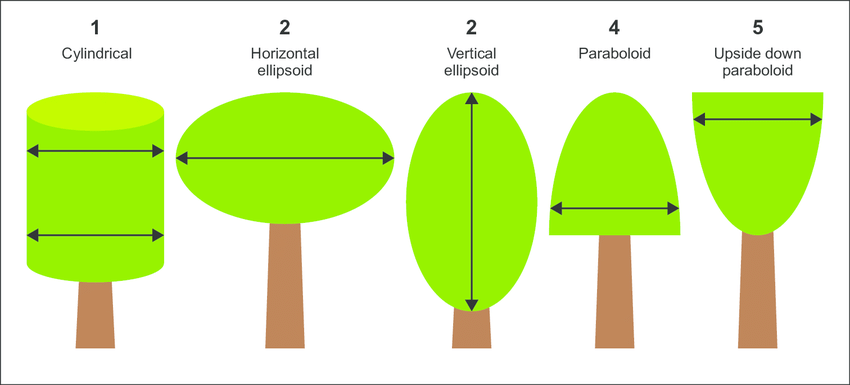Neural Network Tree Crowns - A primer
nnTreeCrowns, or Neural Network Trees, refers to the resulting segmented/modeled tree crowns from deep learning techniques. These modeled tree crowns exhibit several distinctive characteristics that enable accurate identification and delineation of tree properties within imagery.

Firstly, nnTreeCrowns mimic the intricate shapes of tree crowns. Through extensive training on diverse datasets, the models can learn to accurately delineate the boundaries of nnTreeCrowns, distinguishing them from surrounding background elements. This capability is essential for applications such as forest inventory, where precise delineation of tree crowns is crucial for estimating biomass and species composition.
Texture analysis is another key aspect of nnTreeCrowns segmentation. Tree crowns often exhibit distinct textural patterns, such as variations in foliage density and arrangement. nnTreeCrowns exhibit textural features, enabling differentiation between different parts of the crown and accurately segment them from non-crown elements in the image. Textures, combined with spectral signatures, can also enable classification of tree species based on their unique foliage patterns, providing valuable information for ecological studies and biodiversity monitoring (Figure 2.) [1].

Furthermore, nnTreeCrowns show clear variations in color within tree crowns. Foliage color can vary significantly depending on factors such as species, health, and seasonal changes. nnTreeCrowns can learn to recognize and segment these color variations, enhancing the accuracy of crown segmentation.
Edge detection is also critical for precise tree crown segmentation. nnTreeCrowns represent crown edges, even in complex and cluttered environments. This enables delineation of the boundary between tree crowns and their surroundings with high precision, facilitating applications such as forest mapping and ecological research.
Applications
Crown Allometry
Tree crowns in many shapes and sizes. However, they can be summarized in 5 broad categories (Figure 3) [2].

nnTreeCrowns can play a significant role in analyzing tree crown allometry by providing accurate segmentation of tree crowns and extracting relevant morphological features. nnTreeCrowns carry inherent information about the size and shape of tree crowns. By accurately delineating tree crowns from background elements, nnTreeCrowns enable the extraction of precise measurements related to crown size, such as crown diameter, area, and perimeter.
nnTreeCrowns can extract features related to tree attributes, such as height and diameter, from remote sensing data or ground-based measurements. By integrating these attributes with crown morphology data, nnTreeCrowns can analyze the relationship between crown size, shape, and tree characteristics, contributing to the study of tree crown allometry.
Foliage Distribution
nnTreeCrowns can analyze the spatial distribution of foliage within tree crowns, providing insights into crown shape and structure. By segmenting individual branches and foliage clusters, nnTreeCrowns can help quantify the complexity and compactness of tree crowns, which are important factors in understanding crown allometry.
Crown Change
Additionally, nnTreeCrowns (in time series) can be used to study adaptability of trees to various environmental conditions, including lighting, weather, and seasonal changes. Through robust training on diverse datasets, the underlying models can learn to adapt to changing environmental conditions, enhancing their generalization capabilities and ensuring reliable performance across different scenarios.
In summary, nnTreeCrowns represent a powerful tool for accurately identifying and delineating tree crowns within imagery. By combining shape recognition, texture analysis, color detection, edge detection, and contextual understanding, these modeled trees offer a sophisticated solution for tree segmentation, enabling a wide range of applications in forestry, environmental science, and remote sensing.
References
- Maschler, J., Atzberger, C., & Immitzer, M. (2018). Individual tree crown segmentation and classification of 13 tree species using airborne hyperspectral data. Remote Sensing, 10(8), 1218.
- McPherson, E. G., van Doorn, N. S., & Peper, P. J. (2016). Urban tree database and allometric equations (Vol. 253). Albany, CA, USA: US Department of Agriculture, Forest Service, Pacific Southwest Research Station.